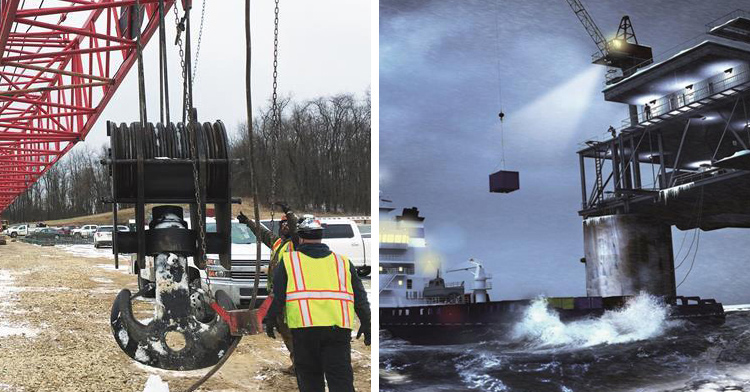
Two environmental factors can significantly affect the safety of steel lifting equipment: cold temperatures and costal climate. The October issue of American Cranes & Transport (ACT) Magazine includes an in-depth article about how these two weather extremes can challenge the structural integrity of cranes and similar heavy lifting equipment.
Baby, it’s cold outside… but not here
Living and working in Florida typically precludes us from experiencing cold weather conditions commonly found north of the panhandle, but freezing temperatures do affect more than half of the states and all of Canada. It’s beneficial to know how the crane industry is impacted. Manufacturers consider “cold” to be below 32 degrees Fahrenheit, though modern equipment is commonly capable of working in conditions as low as -4° F. Some cranes are specially designed to work in temperatures down to -40° F. Below that, many components including fluids, structural and load-bearing steel, electronics, engines, hydraulics and more can be compromised. Steel especially can become brittle when exposed to cold temperatures, increasing the risk of fracture. This process is called the Ductile – Brittle Temperature Transition.
Lifting equipment is designed to bend before breaking, which is a safety feature that allows structural deficiencies to be identified and the lifting operation stopped before complete failure occurs. One way to counter challenges brought about by cold is at the manufacturing stage and composition of raw materials. Steel composition can be summed up by grain size, carbon content and alloy contents. Manufacturers can reduce grain size and carbon content, in conjunction with adding special alloys, resulting in a material that has low hardness and is resistant to becoming brittle in cold temperatures. No matter what the composition is, crane operators should make sure that the equipment is designed to work well in whatever weather conditions they encounter. This includes ropes, slings, winches and blocks.
Meanwhile, back in Florida
Costal and marine environments present a different, yet similar, set of challenges to lifting equipment: brittleness, corrosion and fatigue. The first threat, brittleness, is comparable to cold environments, but the source is different. Hydrogen can enter the steel if exposed to acids during production, a chemical reaction during corrosion, or through absorption in certain environments. The result is called hydrogen embrittlement, which can cause fractures at loads below the working load limit. If these remain undetected, catastrophic failure can occur.
Corrosion, secondly, is the most obvious challenge, influenced by humidity, temperature, depths, water currents, pollutants, wear and salinity. This can be prevented by using stainless steel or hot dip galvanization (coating iron and steel in a molten zinc bath). HDG is more cost-effective and allows for easier inspections as no corrosion occurs to the steel underneath.
Material fatigue is the third factor that can affect steel in marine environments, which is a result of repeatedly applying loads. All steel products have microscopic cracks too small to see with the naked eye. Repeated lifting will cause these cracks to grow until the material fractures. The number of lifts (or stress cycles) that the material can handle is called fatigue life. The heavier the load, the fewer the stress cycles. Factors that affect fatigue life include surface defects (paint, coating, notches or cracks), corrosiveness of the environment, steel properties, and the applied load in correlation to the breaking strength of the steel.
The article, entitled “Environmental extremes and steel lifting”, has complete details. Read it at American Cranes & Transport’s website by clicking here. Images above courtesy of ACT.